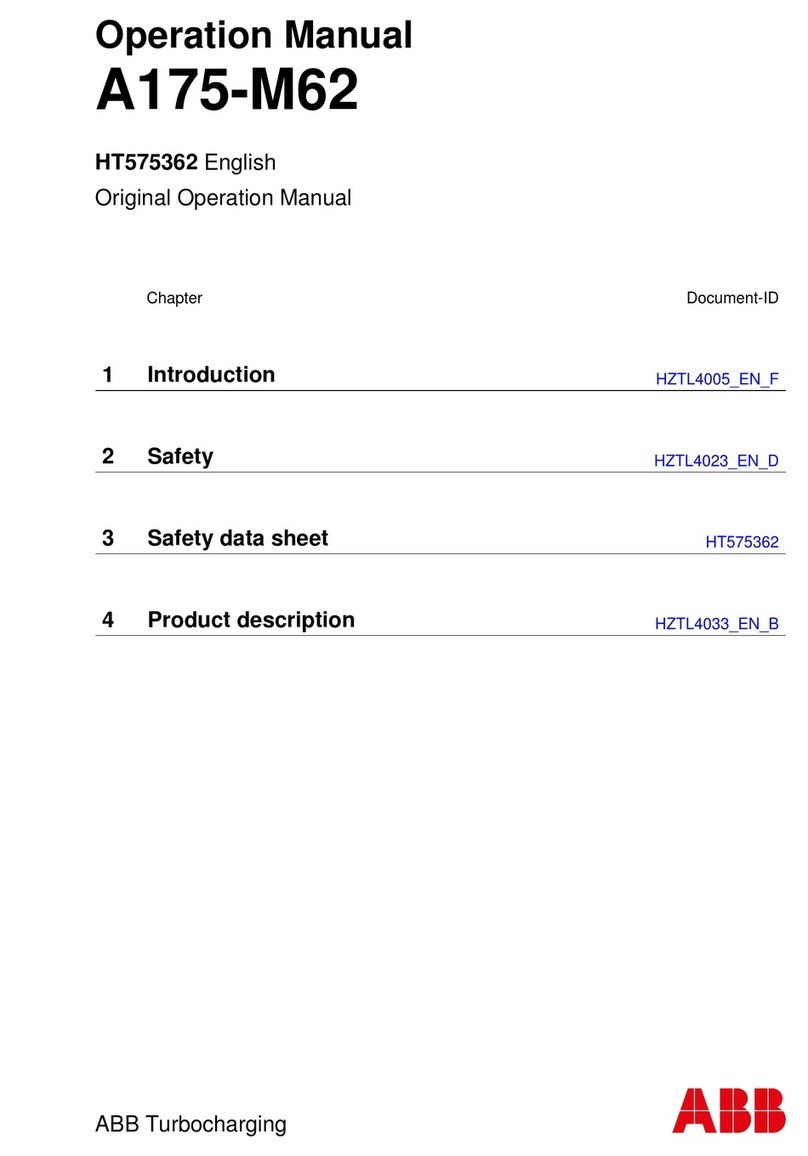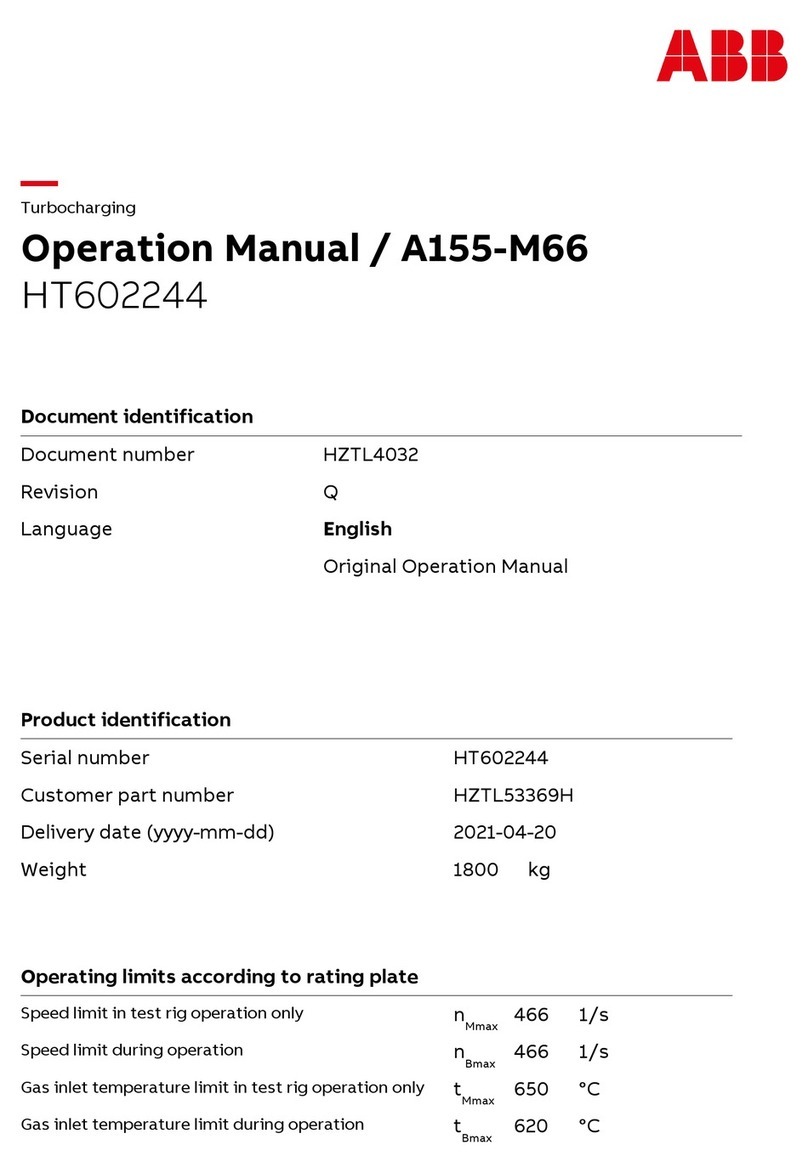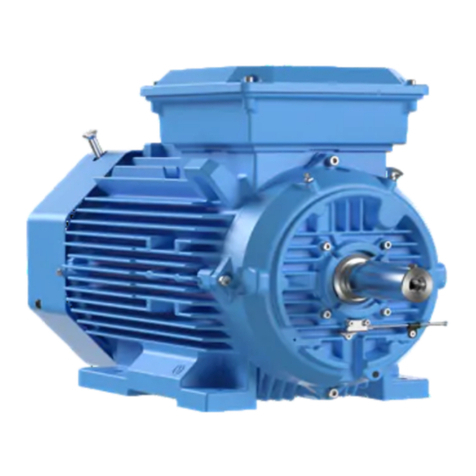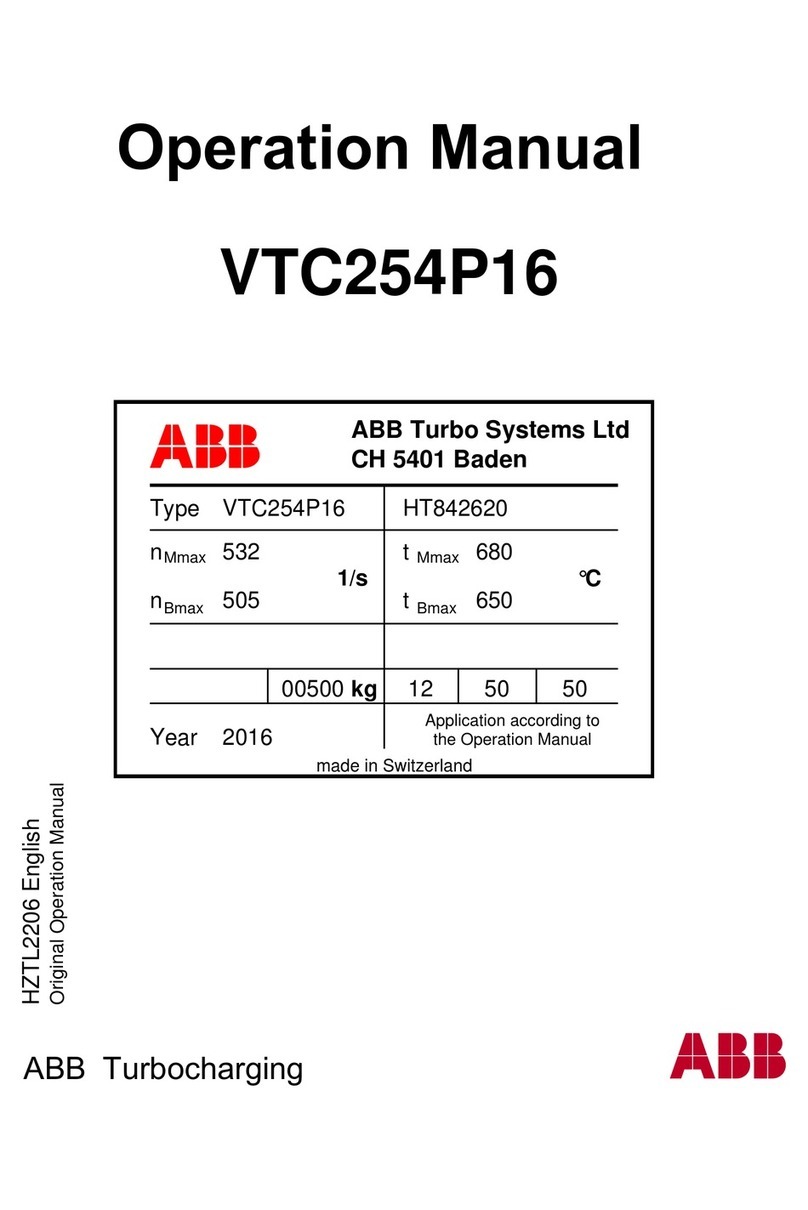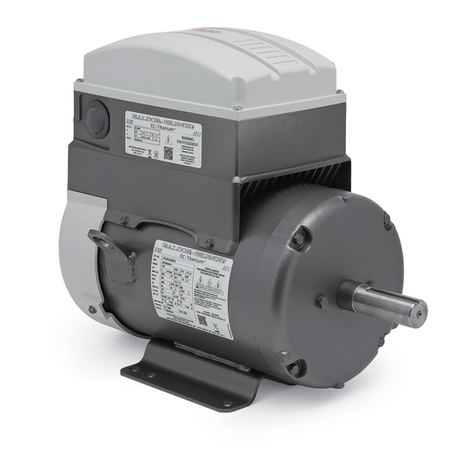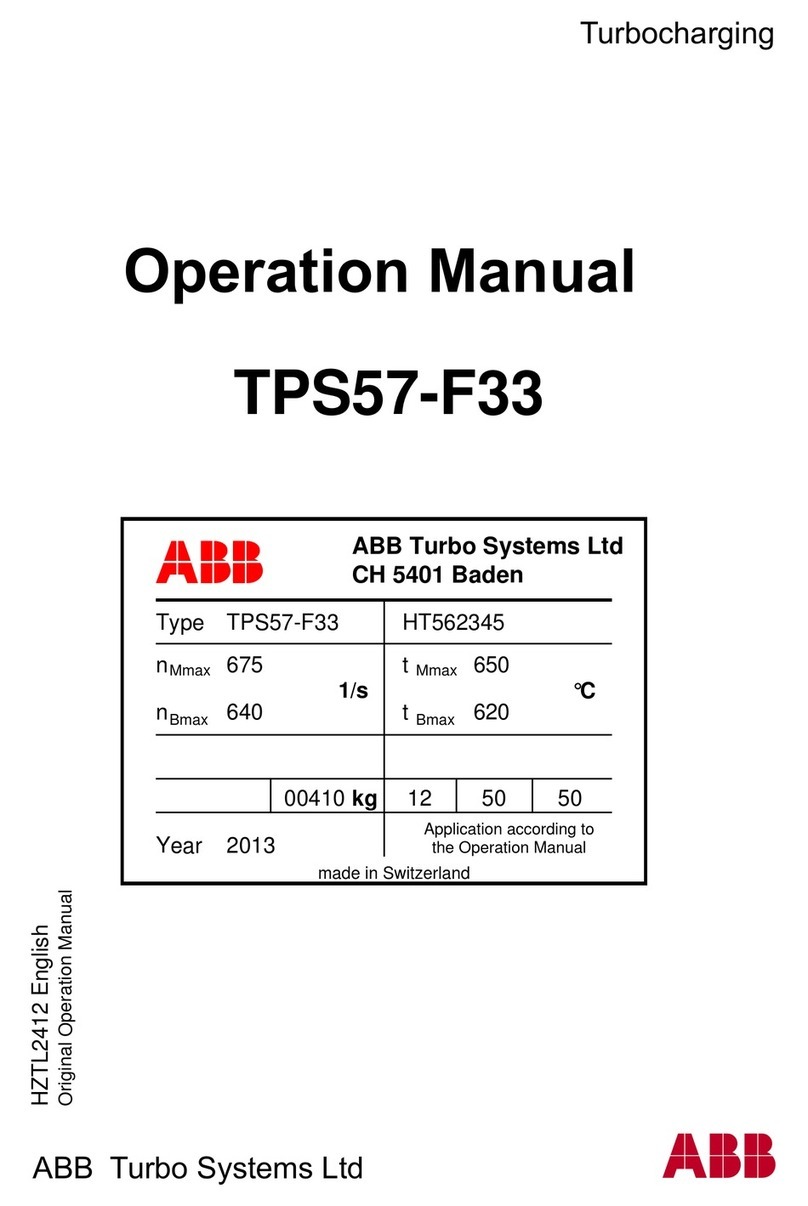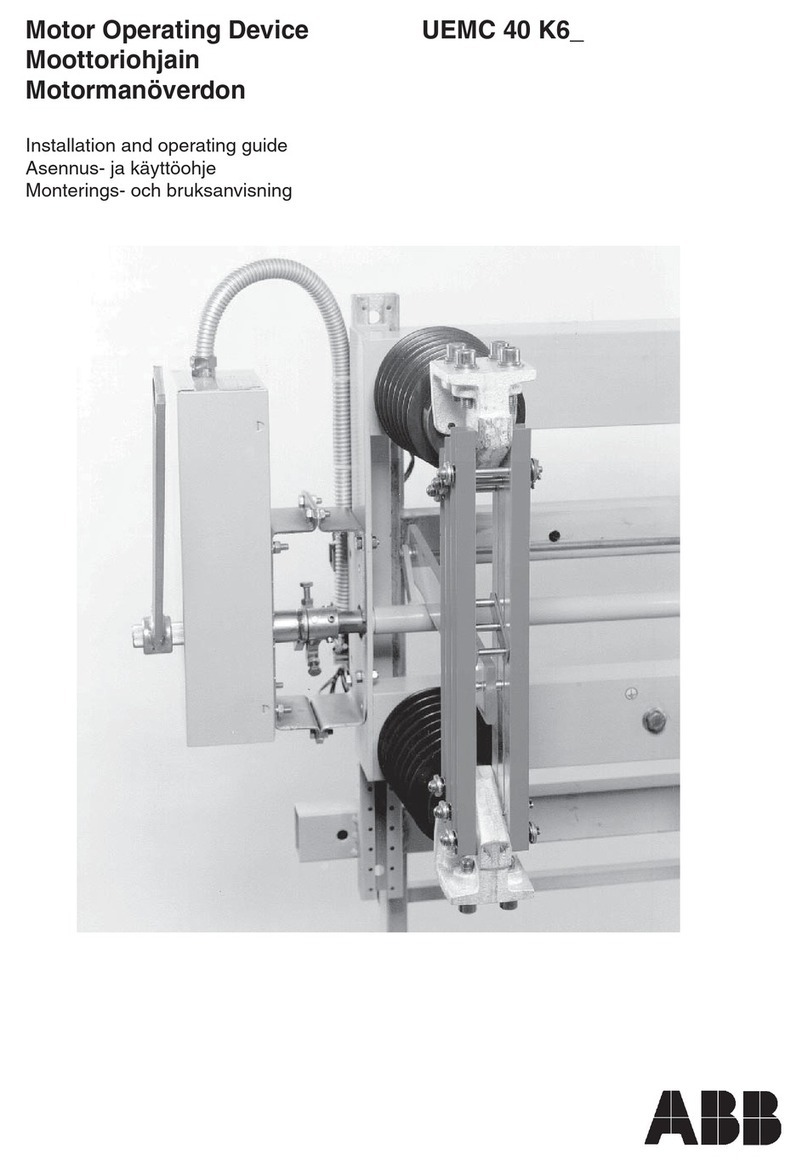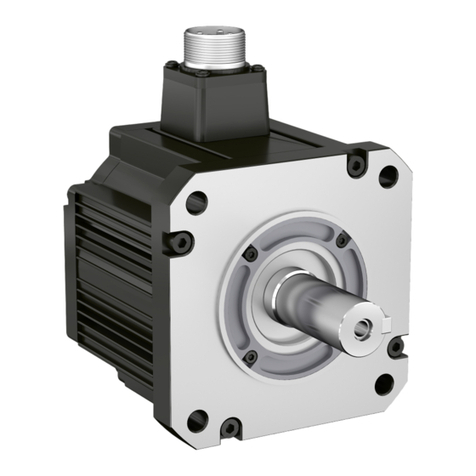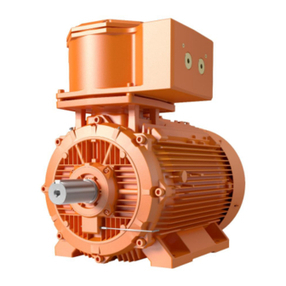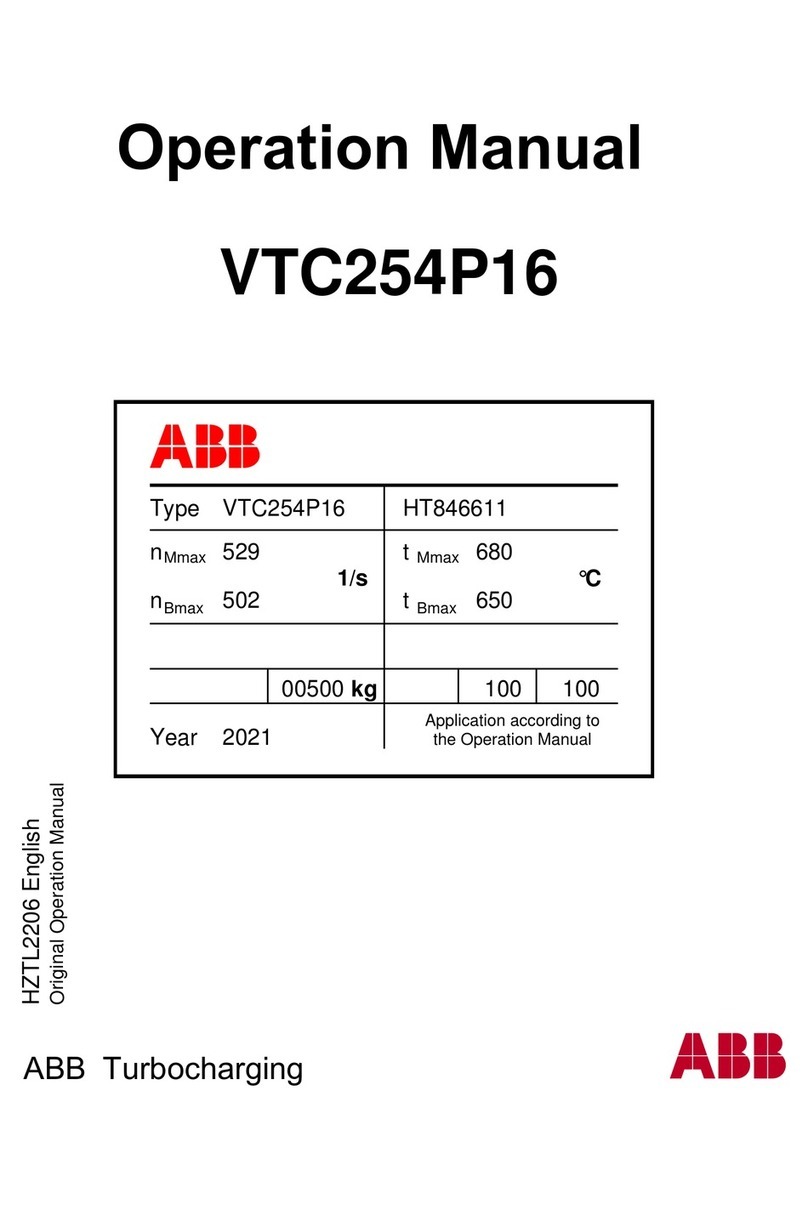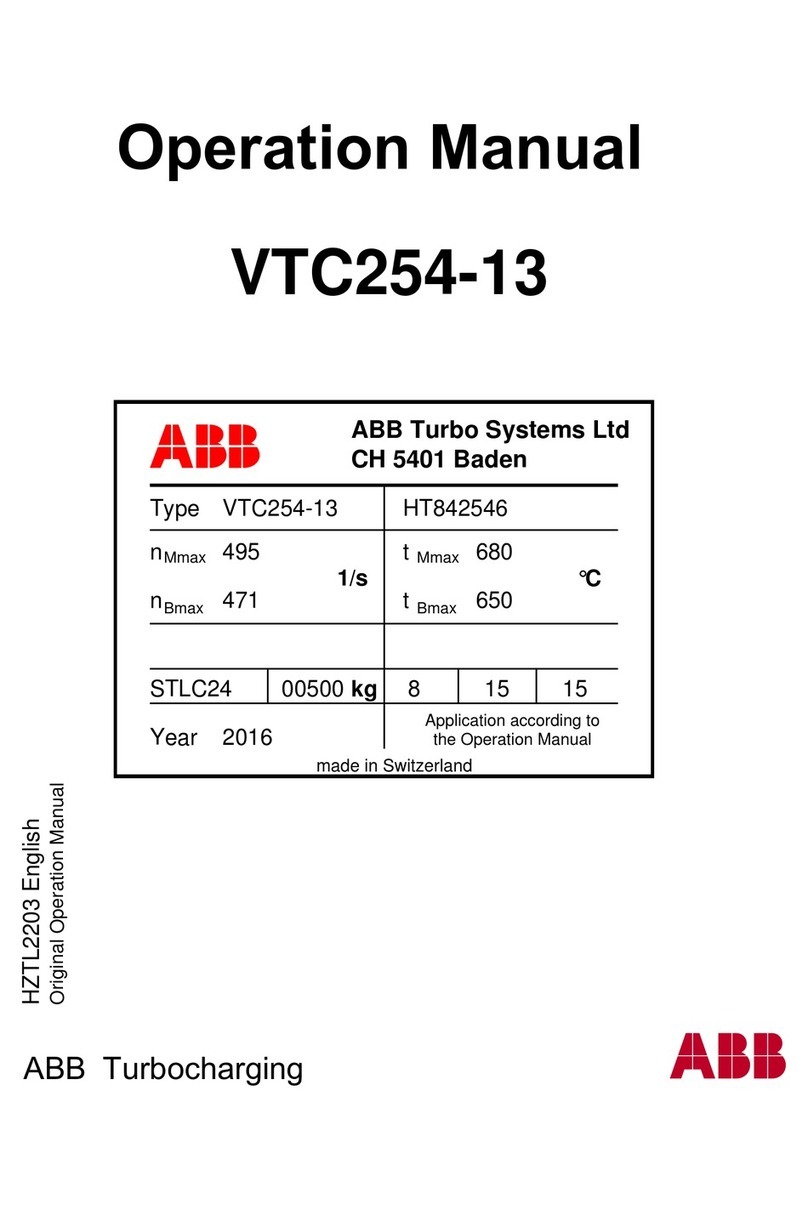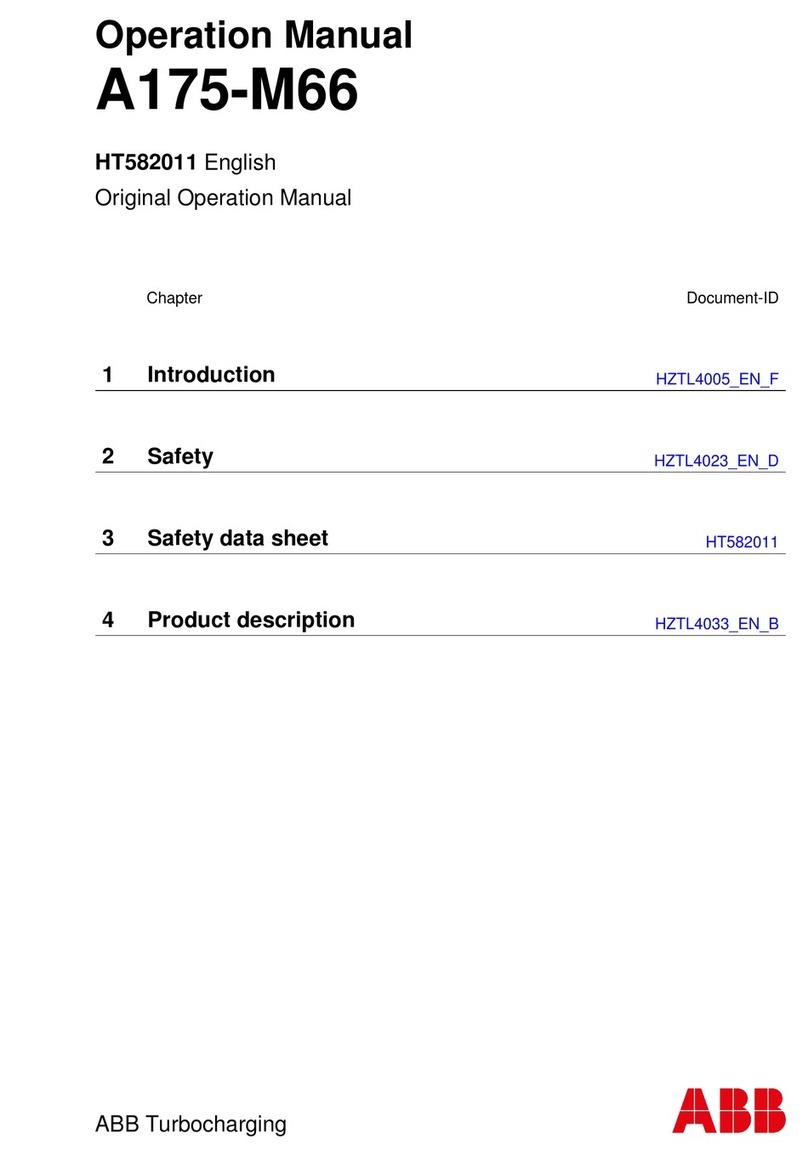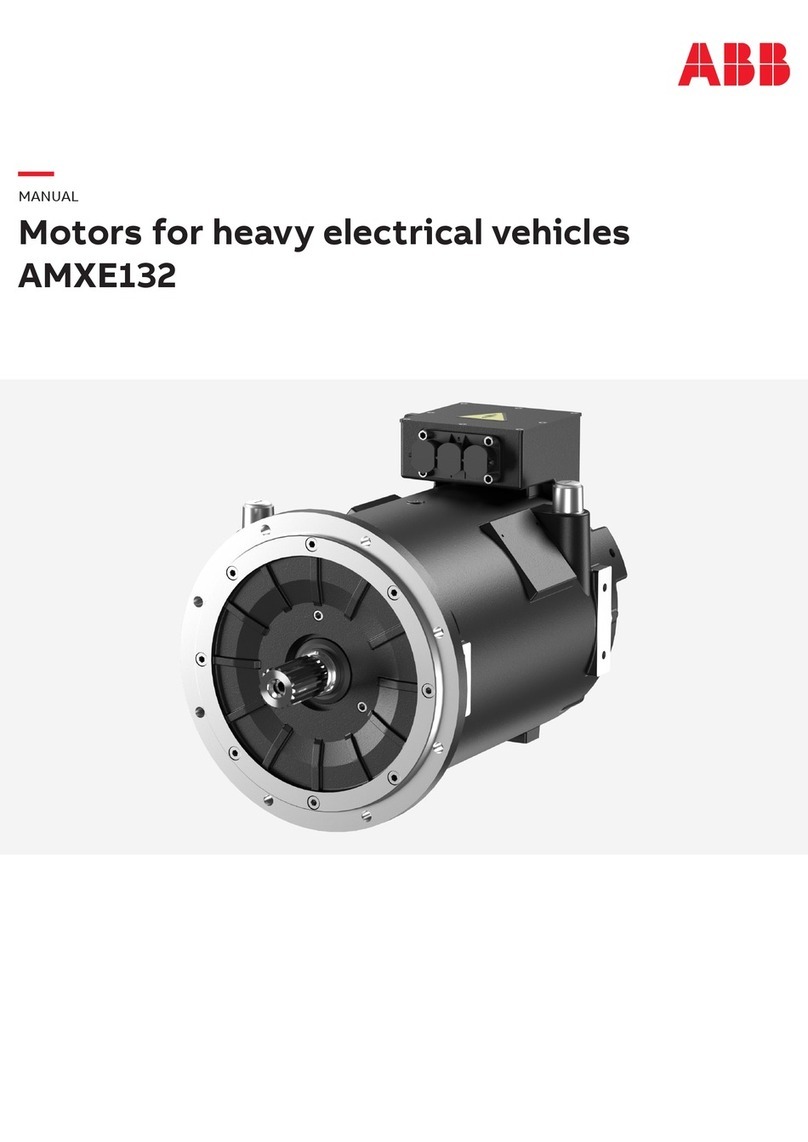
Operation Manual / A130-H.. - A140-H..
Table of contents
© Copyright 2021 ABB. All rights reserved. HZTL4030_EN Rev.G July 2021
6.2 Service work................................................................................................................. 53
6.3 Expected replacement intervals ............................................................................... 57
6.4 Stopping the engine................................................................................................... 59
7 Periodic maintenance work ................................................................................ 60
7.1 Foreword to maintenance......................................................................................... 60
7.2 Cleaning components mechanically ........................................................................ 61
8 Eliminating malfunctions.................................................................................... 71
8.1 Malfunctions when starting....................................................................................... 71
8.2 Malfunctions during operation ................................................................................. 72
8.3 Turbocharger is surging............................................................................................. 75
8.4 Malfunctions when stopping.................................................................................... 76
8.5 Speed measurement system..................................................................................... 77
9 Dismantling and fitting....................................................................................... 78
9.1 Introduction ................................................................................................................. 78
9.2 Weights of individual parts....................................................................................... 80
9.3 Removing the air inlets .............................................................................................. 82
9.4 Removing the gas outlet casing .............................................................................. 83
9.5 Removing the gas outlet flange............................................................................... 83
9.6 Removing the compressor casing ........................................................................... 86
9.7 Pressing off the casing .............................................................................................. 88
9.8 Removing the cartridge group................................................................................. 89
9.9 Removing the nozzle ring ........................................................................................... 91
9.10 Installing the cartridge group on the service support ........................................ 92
9.11 Measuring clearance A and B.................................................................................... 93
9.12 Nozzle ring compression PD..................................................................................... 94
9.13 Installing the nozzle ring ........................................................................................... 95
9.14 Installing the cartridge group .................................................................................. 96
9.15 Installing the compressor casing ............................................................................ 98
9.16 Measuring radial clearances N and R .................................................................... 100
9.17 Installing the air inlets .............................................................................................. 101
9.18 Installing the gas outlet flange .............................................................................. 102
9.19 Installing the gas outlet casing.............................................................................. 102
9.20 Table of tightening torques.................................................................................... 103
10 Taking out of operation at short notice ......................................................... 104
10.1 Possible emergency repairs.................................................................................... 104
10.2 Installing the replacement turbocharger............................................................. 105
10.3 Installing the replacement cartridge group ........................................................ 105
11 Mothballing the turbocharger.......................................................................... 106
11.1 Taking the engine out of operation for up to 12months ................................. 106
11.2 Taking the engine out of operation for more than 12months ........................ 107
